Labs


|
Nuclear Lab 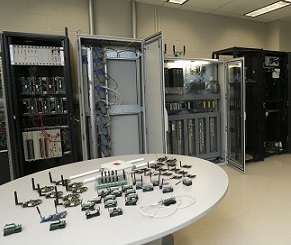
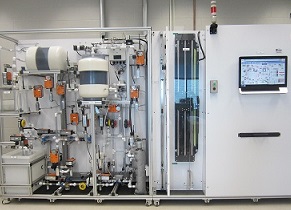
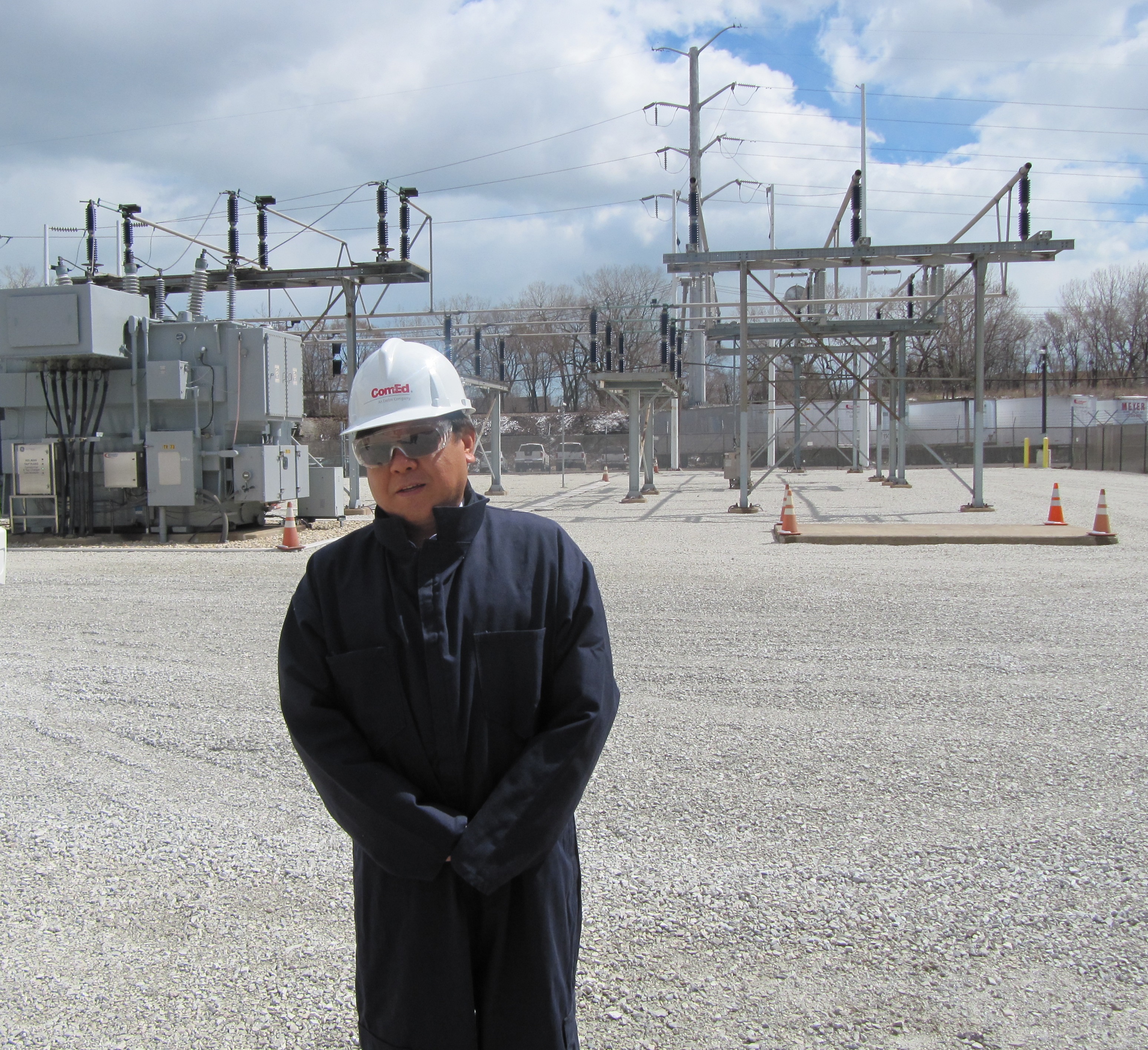
|
The Control, Instrumentation & Electrical System (CIES) Laboratory at The University of Western Ontario, in London, Ontario, Canada, was established in 2003 with financial support from the Canadian nuclear and electric power industries, as well as both federal and provincial governments. The main research foci of the lab are (1) instrumentation and control systems for nuclear power plants; and (2) control/integration of renewable energy resources in the form of distributed power generation. Within the first focus area, current research can be grouped into three themes: (1) Reactor Modeling, Simulation, and Fault Diagnosis; (2) Network-based Control, Smart Sensors, and Wireless Sensor Networks; and (3) Innovative Approaches to Safety Control Systems. Each of these themes contains a number of related research projects. Projects are selected in response to the short, medium and long term needs of the nuclear power industry. Research activities within the field of control/integration of renewable energy resources and distributed power generation can be grouped into the following three themes: (1) Control and Integration of Renewable Energy (wind and PV) Sources, (2) Power Electronic Interface, Grid Connection, and Energy Storage; and (3) Control of Fuel Cell Systems as Sources of Distributed Generation. Each of these areas contains a number of different research projects. The projects are selected to reflect the current needs of the electrical power industry. In order to better support research activities in these two areas, two research labs have been established, each equipped with state-of-the-art facilities. There are currently twenty researchers working on various topics within the fields mentioned above.
In addition, the lab also houses test equipment, such as spectrum analyzers, signal generators, and oscilloscopes, as well as data acquisition (NI) and analysis software tools, such as matlab and LabView. Distributed Generation (DG) Lab
The lab also provides an isolated 3-phase grid simulator, as well as power system design and simulation software packages, such as PSCAD and SimPowerSystems™. |
DG Lab 

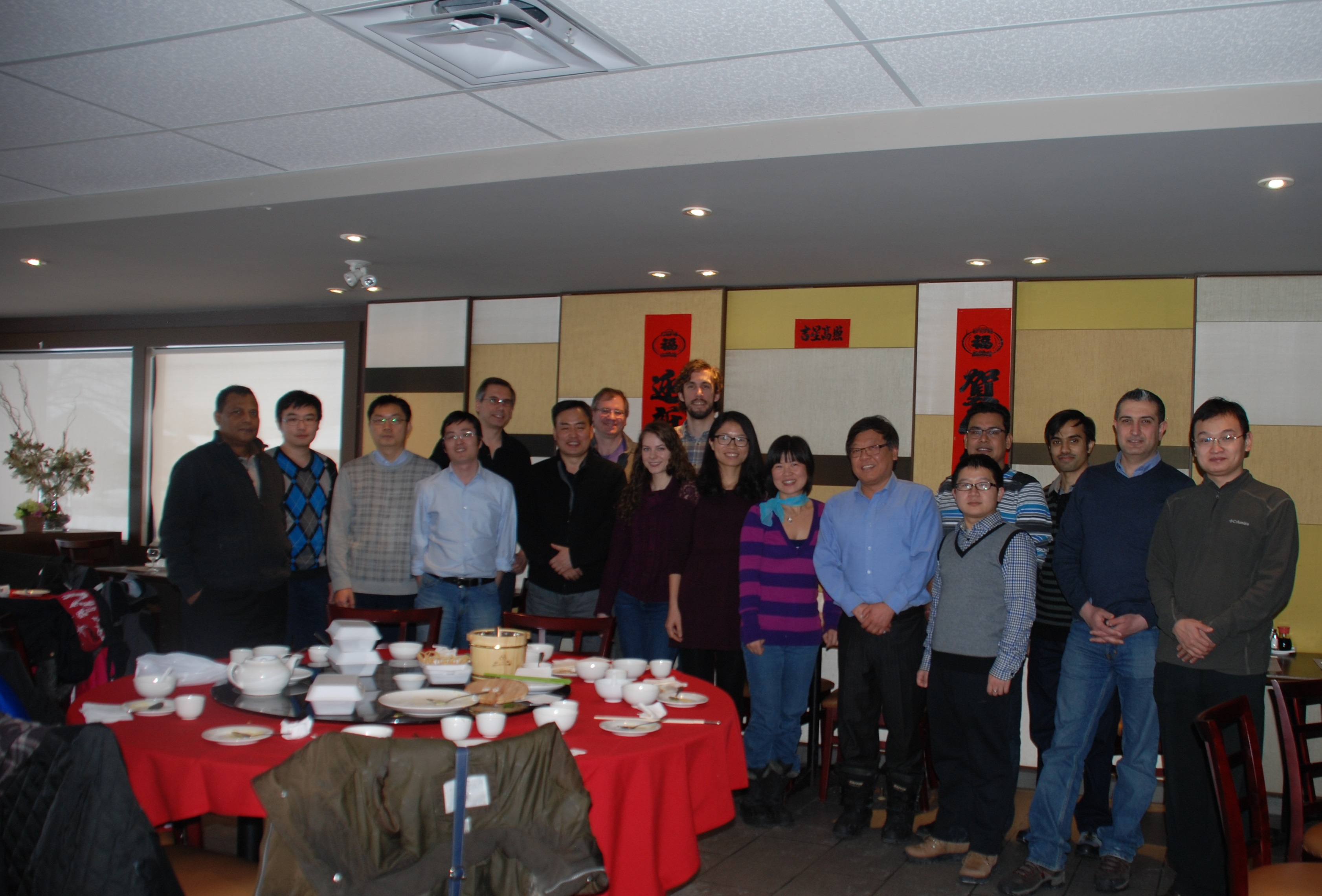
|
|
Nuclear Power Plant I&C Lab 
|
||

|
A CANDU NPP Simulator Nuclear power plant simulator plays an important role not only in training, but also for validating new control schemes and algorithms. This desktop simulator contains detailed loops and full functionalities of a CANDU unit at Darlington nuclear power plant. The dynamic behaviors of the nuclear power plants under different operating modes can be simulated and faults can be inserted for training and research purposes. The simulator has been retrofitted to communicate with external hardware control systems to form a hardware-in-the-loop simulation platform. The simulator has been used to support research projects on safety control systems, validation of advanced control algorithms implemented on distributed control systems. |

|

|
Nuclear Power Control Test Facility (NPTCF) The Nuclear Power Control Test Facility is a unique facility, developed in-house to support the research and development of advanced instrumentation and control systems found in a typical NPP. The facility consists of 25 industrial grade sensors (7 types for diversity) and over 30 actuators with interlocks. All the measurement and control signals can be accessed either through a central junction box or through distributed industrial wireless sensors. The facility uses water as its working fluid in order to better simulate a real nuclear power plant, with a heater employed to heat up the water to simulate the fission reaction. There are total of 5 physical loops that can be easily configured to suit the special needs of each research project. The system can be operated as a self-contained unit with an onboard DCS system, or controlled by a separate stand-alone DCS system through either fieldbus connections or standard 4 – 20 mA connections. The system also contains two diverse shutdown systems to shutoff the heater and initiate gravity-assisted cooling water injection. This facility has been used for the validation of reactor protection systems, analytical redundancies, fault detection and diagnosis, validation of smart sensors, security of cyber-physical systems, advanced control of dynamic processes, and wireless sensor network enabled advanced diagnosis. |
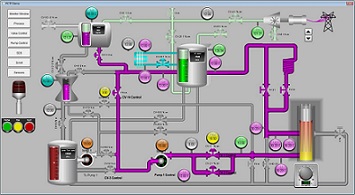
|
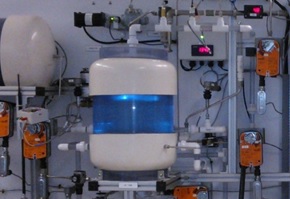
|
Mock-up for Steam Generator Level Steam generators are an important system in a nuclear power plant, as they physically separate the fluids in the radioactive primary loop from those in the secondary loop. However, due to its inverse dynamic behavior, controlling levels of steam generator requires special consideration. The mock-up system is constructed according to valid advanced control algorithms for steam generators in a typical CANDU or PWR reactor. The water level is simulated by an aluminum plate, while compressed air is used to simulate the volume of the water, lifting the plate. A laser sensor measures the level of the plate. Adjusting the air pressure allows effective control the level of the plate. The mock-up includes a special electronic compensator, which has been designed to mimic the inverse dynamics found in a typical steam generator. The dynamics of this mock-up system have been validated by comparing its responses against widely accepted steam generator models. This facility has also been used to test the effects of time-delays on control channels, predictive shutdown systems, and model-predictive control algorithms. |

|

|
Nuclear Grade Safety PLC To meet the very high availability requirements of reactor protection systems, hardware controllers used in NPP shutdown systems are required by nuclear regulators to pass a strict certification process. There are currently several safety PLC systems certified for use in nuclear power plants. One example is the Tricon safety PLC from Invensys, a state-of-the-art fault tolerant controller based on Triple-Modular Redundant (TMR) architecture. Another is the HFC6000, from HF Control, which also relies on redundancy in its controllers, network connections, bus links to I/O modules, and power supplies. These two nuclear certified safety PLCs have served as a benchmark for the development of safety-related control systems in our lab. These systems have been connected to a Desktop NPP Simulator as well as an NPCTF to support research activities in reactor protection systems, predictive shutdown systems, and as well as the establishment of benchmark systems for the development of FPGA-based safety systems. |

|

|
Distributed Control Systems (DCS) Distributed Control Systems (DCSs) have been widely used in newly constructed or recently refurbished NPPs. Our research team has created a test platform based on four different DCS systems to examine the special features of DCSs applicable to NPPs. These systems are: DeltaV from Emerson, PCS7 from Siemens, C300 from Honeywell, and ECS-1200 from HF Control. Through proper interface choice, one can easily implement a control system using various fieldbus industrial wireless technologies. The DeltaV system has been used to control the NPCTF, while the Siemens PCS7 has been used to implement advanced level control on the steam generator mock-up system. Distributed Control Systems play an important role in implementing advanced academic research into industrial control system platforms. These systems have been used to support research in advanced programming languages for industrial control systems, the implementation of fieldbus based control systems, and the development of advanced user interfaces. |

|
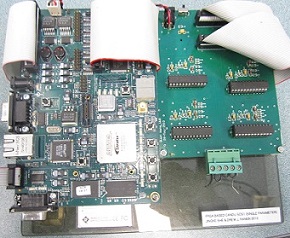
|
FPGA Platforms Field Programmable Gate Arrays (FPGA) have recently gained significant popularity in NPP safety critical control system design and implementation. This is because the high-speed parallel operation and the failure modes of FPGA systems are much less than those in other software-based systems. The lab has two types of FPGA development systems available for implementing safety control functions: an Altera Stratix EP1S40F780C5-based platform and a National Instruments PXI-7811R platform. Both systems have their own development environments and I/O interfaces connected to a Desktop NPP Simulator or NPCTF. Both platforms have been used to implement safety functions to achieve high-speed decision–making processes found in NPP safety shutdown systems. They can also be used to implement advanced control system functions in the support of research and development. |
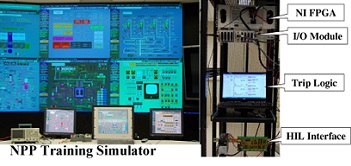
|
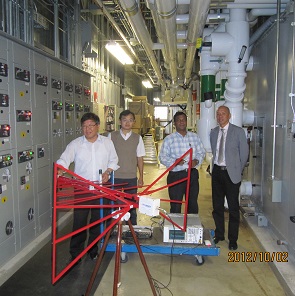
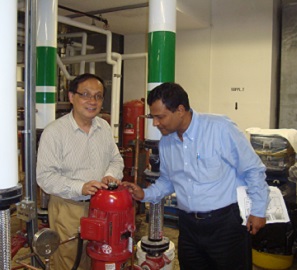

|
Wireless Sensor Networks Wireless sensor networks (WSNs) have been successfully applied in many different civil and military applications. Recently, industrial applications of WSNs, particularly those used for process control, plant and equipment monitoring, and fault diagnosis, have attracted significant attention among industry operators. This is because WSNs provide a low-cost, convenient alternative to conventional wired solutions in many situations. Increased interest in industrial WSNs (IWSNs) have led to the development of several international standards, including ZigBee, WirelessHART, and ISA 100.11a. However, industrial WSNs also offer unique challenges due to their hard real-time constraint requirements and harsh industrial environments. Furthermore, for applying WSNs in nuclear power plants requires consideration of damage to the WSNs’ electronic components from radiation exposure. The CIES research lab provides state-of-the-art facilities for research on nearly all aspects of industrial WSNs. The lab houses several modern industrial WSN systems, wireless signal generation and transmission devices, and signal measurement equipment. The lab also provides a real industrial system with industry grade sensors and actuators, allowing wireless devices to be integrated and interfaced with existing DCS systems. The lab houses the following wireless sensor network systems:
The lab also provides facilities to do research with home area networks, and energy management through the integration of load and distributed generator information over smart meters. The lab houses three commercial grade smart meters, as well as a home area network developer smart meter from Itron, Inc. that enables it to simulate loads and time-of-use-based cost information. The lab also provides ZigBee SE-based communication environments.
|
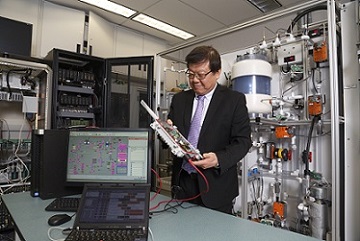
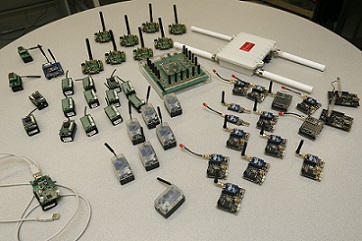
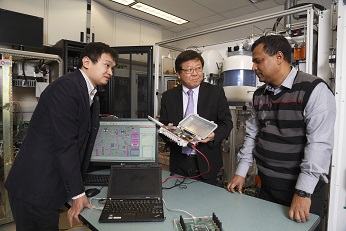
|
|
Distributed Generation (DG) Lab 
|
||
|
DC Motor-driven Synchronous Generator Sets Despite the recent introduction of new forms of power generation (e.g. PV, fuel cell, and wind power), synchronous generators remain the most commonly used energy conversion device in power generation. Our lab includes two synchronous gen-sets available to provide 3-phase AC power output in support of research and development. These gen-sets are driven by their respective DC motors. Adjusting the speed of the DC motor allows researchers to easily regulate the AC power output frequency. The output voltage can also be controlled using field excitation. These units can be used as independent energy sources in a microgrid environment, working with other non-traditional sources to supply the total load demand. They mimic the back-up Diesel generators used in many practical microgrid settings in remote areas or high reliability power sources, such as those on-site of a nuclear power plant. These gen-sets have been used together with fuel cell power units to form a microgrid, as well as to evaluate fault tolerant control algorithms. |

|
|
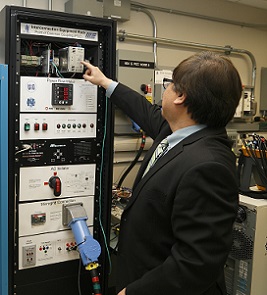
|
Grid-synchronization and Connection Systems The PCC (Point of Common Coupling) is the interface between the microgrid in the lab and the main grid (in this case the university campus grid). One of the most important functions performed by the PCC is to provide adequate protection for both the grid and the microgrid. This is achieved through the use of an intertie relay (Beckwith Electric Co. M3520) that only allows the microgrid to join the larger grid once the voltage, frequency, and phase angle between them are in-sync. The lab PCC also contains a manual isolation switch to force the microgrid into island operation, as well as over-current (fuse) protection and a power flow meter to monitor bi-directional power flow between the grid and microgrid. This facility enables researchers to investigate both grid-connected and islanded microgrid operation, examine utilization of smart meters, and load-side management. In addition, the power generated from the lab’s rooftop PV panels, wind turbine, and in-house fuel cell power stack can be fed back into the campus grid through the PCC. |
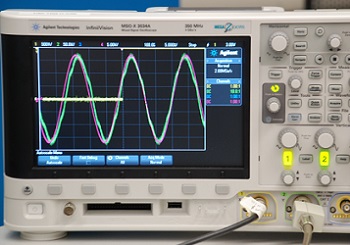
|

|
Power Electronic Converters The Distributed Generation Laboratory is equipped with several modular DC-DC and DC-AC power electronic converters that have been custom designed for microgrid integration research. Two MOSFET-based 2 kW DC-DC converters (one of which is bi-directional) are used to interface DC sources and storage, such as photovoltaic panels and batteries, to a 400 V DC-link. Two DC-AC 3-phase, 3 kW inverters, operating at an AC bus voltage of 208 Vl-l, have been constructed to test inverter control strategies. These converters are controlled by Texas Instruments C2000 microcontrollers, which are programmed using Matlab Simulink. Other inverters used in the lab include a one-stage 1.5 kW DC-AC converter, used to convert 28-40 V DC output from the fuel cell power unit to 128 V 3-phase AC power output, as well as AC-DC and DC-DC converters designed specifically for wind power conversion. These power electronic converters are the most essential system components for microgrid control and integration of renewable power resources into power grid. |

|
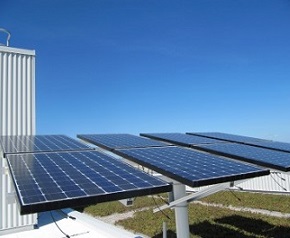
|
Roof-top PV Panels In order to better study the performance of photovoltaic systems under different ambient and solar irradiance conditions, eight PV panels have been installed on the roof of the engineering building. This enables our researches to study the temperature, level of irradiance, and current weather conditions on or near the panels in real-time, with data made available through wireless connections to the energy management system located in the lab. What makes this system unique is that all electric connections for each individual panel are fed directly into the lab. Panel connections can be configured according to the specific requirements of each research project. This system has been used to study shading and temperature effects on PV panels, compare levels of power output under different panel configurations, and to validate the use of different control schemes for PV solar energy microgrids. |
<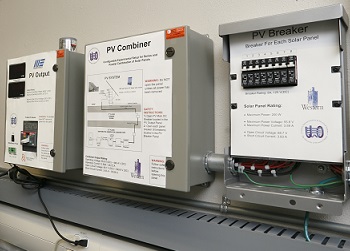
|

|
Wind Turbines A 1 kW permanent-magnet synchronous generator (PMSG)-based wind turbine has also been installed on the roof of the engineering building. The power generated from the turbine is fed into the research lab, and can be used as a separate energy source for the lab’s microgrid. A weather station has also been mounted near the turbine to wirelessly obtain temperature, wind speed, and other environmental data. This system provides a test environment for an actual wind turbine under real-world conditions, supporting research on wind turbine control and the validation of power electronic converter design for wind turbines. The lab's wind turbine has been used to construct a microgrid involving wind and battery storage. It can also be used as an independent energy source for a microgrid. |

|
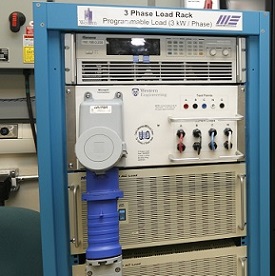
|
Programmable Loads In order to evaluate the performance of microgrids under various operating conditions, the lab is also equipped with several load banks, including adjustable resistant banks and programmable electronic AC and DC loads. These loads can be configured into four different operating modes: constant current, constant resistance, constant power, and constant voltage. The AC loads can also be set to operate in four modes: constant current, constant voltage, constant impedance, and constant power. Furthermore, the power factor (PF) and the crest factor (ratio between the peak and the rms value) can be adjusted in real-time through a software based user interface according to the needs of the experiment at hand. These loads are an integral part of testing and experimental evaluation of control algorithms for microgrids, and can also to be used as smart-loads in load-site management experiments to evaluate control schemes for smart grids and smart homes. |
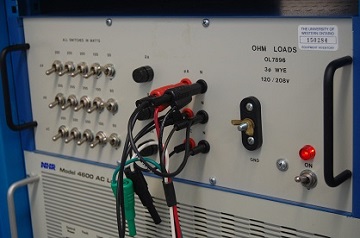
|
|
Fuel Cell Power Module Fuel cells are essential elements in hydrogen economy and hydrogen society. Unlike other clean energy resources, fuel cells constitute a dispatchable source of energy. Our lab is equipped with a 1.2 kW Polymer Electrolyte Membrane (PEM) fuel cell power module, which uses hydrogen as an energy carrier to generate electrical power. At steady-state operation, the fuel cell power module can deliver a DC power output between 28 and 40 V, depending on load conditions. Together with this unit, a one stage DC-AC converter has been constructed to convert the DC power output from the fuel cell to 3-phase AC power at 128 V, forming an important independent energy source for the microgrid. This fuel cell power module system has been used with motor-driven synchronous gen-sets to form a microgrid in an islanded mode operation with three independent energy sources. It can also be used with other energy resources, such as PV panels, wind turbines, and batteries, to form a microgrid in support of research and development activities. |

|
|
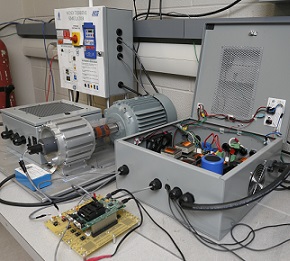
|
Wind Turbine Simulator To support research on the control and coordination of microgrids involving wind power, a physical wind turbine simulator has been constructed for use in the lab. This simulator uses the exact same permanent-magnet synchronous generator as the rooftop turbine. However, an induction motor with a variable speed drive is instead used as the prime mover to drive the simulator generator. The entire system is controlled in an NI LabView environment. This allows for simulation of wind turbine operation and electrical power production at any particular geographical location simply by inputting the wind profile appropriate to that location. AC-DC and DC-DC electronic converters have been designed and constructed to allow easy connection of the simulator as an independent energy source to the microgrid. This wind turbine simulator has been used to investigate different control and coordination schemes between wind energy and battery storage, enabling researchers to simulate wind power generation conditions from all over the world based on local wind profiles. |

|
|
dSPACE Rapid Control System Development System The dSPACE system can be interfaced with both analog and digital sensors and actuators, including power electronic converters, and can be connected to 50 bit-I/O channels, 36 A/D channels, and 8 D/A channels. The system also contains a supplementary Texas Instruments digital signal processor for executing high-speed control loops, along with serial and CAN bus interfaces. Associated ControlDesk software includes features for building graphical user interfaces and for collecting and visualizing experimental data. This development system is a must-have for control system research and development, as it allows for rapid tests and evaluation of new control algorithms and concepts without the additional burden of setting up new hardware and software environments. |

|
|

|
Energy Storages Electrical energy storage is a critical component of any microgrid system involving islanded operation and the use of renewable energy resources. The laboratory is equipped with storage systems based on three different technologies. A traditional sealed AGM lead-acid battery system (6 kWh, 192V, 32 Ah) can be interfaced with renewable sources in the microgrid with different bus topologies and control schemes. A set of Maxwell super-capacitors (56V, 130F) provide another storage capability that exhibits different operating characteristics. Finally, two lithium-based battery systems are also available to be interfaced with the microgrid: a LiFePO4 (200V, 60A, 0.53 kWh) and a LiFeMnPO4 (36V, 40Ah) Prismatic Battery Module with an integrated battery management system. These battery storage systems allow researchers to examine coordination of PV and wind power controls in an islanded mode of operation. Through the proper combination of battery storage systems with renewable resources, one can make the combined system dispatchable. |
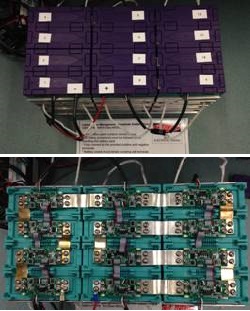
|
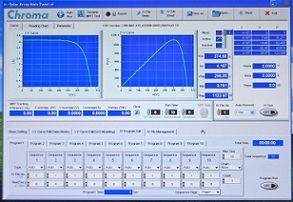
|
PV Simulators In addition to 8 photovoltaic panels on the roof, there are two additional programmable Chroma 62050H-600S 5 kW DC programmable PV simulators. These simulators allow experiments to be carried out when the real PV panels are not producing the desired power output due to the time of day or weather conditions. The simulators are rated at up to 600 VDC and 8.5 A, and can be operated either in series or in parallel to meet the needs of the experiment. They are controlled by Windows-based application software, which allows them to emulate the characteristic I/V curves of real solar arrays under different irradiance conditions in order to test control strategies in a more controlled environment. These simulators can also be used as a regular power source to simulate other DC energy sources in support of microgrid research activities. |

|
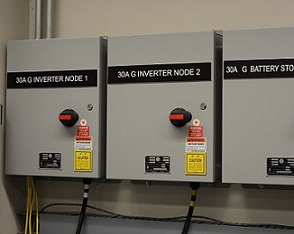
|
A Reconfigurable Microgrid with Simulated and Physical Energy Sources To meet the needs of various research projects, a configurable microgrid bus system has been constructed and installed around the perimeter of the lab. This system consists of a permanently installed 3-phase 208 VL-L 10 kVA bus-bar that provides various points of connection (nodes) for generators and loads. Each generator and load node is equipped with a 3-phase fused isolator, as well as a 3-phase contactor connected to the emergency shutdown system. The grid connection node has an ITRON smart meter to measure the power flow at the point of common coupling (PCC). Each node is also equipped with a GE Multilin Power Quality Meter that can monitor electrical quantities at that node, including voltage, current, and harmonics, with this information accessed remotely via Ethernet. Researchers can easily and safely create a microgrid that suits their research needs by configuring the microgrid bus system using the isolation switches.
|
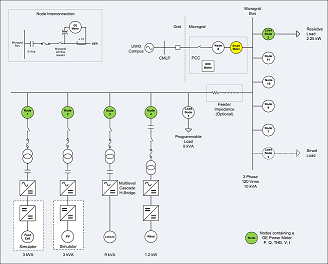
|
|
All rights reserved. 2015-2016
Phone: (519) 661-2111 Ext. 88320; Fax: (519) 850-2436; E-mail: jjiang@uwo.ca Office: TEB 333, Electrical & Computer Engineering, Faculty of Engineering The University of Western Ontario, London, Ontario, Canada N6A 5B9 |